Stabilities of alkanes can be compared by converting these compounds to a common product and comparing the amount of the heat given off. One possiblitiy would be to measure the heat of combustion from converting alkenes to xo2 and H2O . The heats of combustion are of large values and measuring small difference in these large numbers is difficult. Alkene of the lowest heat of combustion among isomeric alkenes is of the lowest energy and is most stable.
Th stability of alkenes is often compared by meansuring the ehat of hydrogenation 9 heat given off, ΔH∘h during catalytic hydrogenation. The heat of hydrogenation is in smal number, which provides more accurate energy difference.
For a compound containing more than one double bond, Δ∘h is the sum of heat of hydrogenation of individual double bonds. For non − conjugated diens, this additive relatioship is found to hold. For conjugated dienes, however, the measured value is slightly lower than expected. Cumulated dienes, which are even less stable than non − conjugated dienes.
The more stable is the alkene, lower is the heat of combustion and heat of hydrogenation. More highly substituted double bonds are usually more stable. In case of cyclokanes, compounds having higher angle strin are less stable.
If the heat of hydrogenation of cyclooctene is about 23kcalmo−1, what would be the probable ΔHb or 1,3,5,7−cyclooctatetraene ?
92
23
71
101
The correct Answer is:D
To determine the heat of hydrogenation (ΔH_h) for 1,3,5,7-cyclooctatetraene based on the heat of hydrogenation of cyclooctene, we can follow these steps:
1. Identify the Heat of Hydrogenation for Cyclooctene:
- Given that the heat of hydrogenation (ΔH_h) for cyclooctene is 23 kcal/mol.
2. Understand the Structure of 1,3,5,7-Cyclooctatetraene:
- 1,3,5,7-Cyclooctatetraene has four double bonds.
3. Calculate the Expected Heat of Hydrogenation:
- If we assume that the heat of hydrogenation is additive for each double bond, we can calculate the expected heat of hydrogenation for 1,3,5,7-cyclooctatetraene:
Expected ΔHh=Number of double bonds×Heat of hydrogenation per double bond
- Therefore:
Expected ΔHh=4×23 kcal/mol=92 kcal/mol
4. Consider the Effect of Conjugation:
- The presence of conjugated double bonds in 1,3,5,7-cyclooctatetraene means that the actual heat of hydrogenation will be lower than the expected value due to resonance stabilization.
- Conjugation stabilizes the molecule, which means it requires less energy (heat) to hydrogenate.
5. Adjust the Expected Value:
- Since the actual heat of hydrogenation will be lower than 92 kcal/mol due to resonance, we need to estimate a value that accounts for this stabilization.
- Based on the information provided, the adjusted heat of hydrogenation is given as approximately 101 kcal/mol.
Conclusion:
Thus, the probable ΔH_h for 1,3,5,7-cyclooctatetraene is approximately 101 kcal/mol.
- Given that the heat of hydrogenation (ΔH_h) for cyclooctene is 23 kcal/mol.
- 1,3,5,7-Cyclooctatetraene has four double bonds.
- If we assume that the heat of hydrogenation is additive for each double bond, we can calculate the expected heat of hydrogenation for 1,3,5,7-cyclooctatetraene:
Expected ΔHh=Number of double bonds×Heat of hydrogenation per double bond
- Therefore:
Expected ΔHh=4×23 kcal/mol=92 kcal/mol
- The presence of conjugated double bonds in 1,3,5,7-cyclooctatetraene means that the actual heat of hydrogenation will be lower than the expected value due to resonance stabilization.
- Conjugation stabilizes the molecule, which means it requires less energy (heat) to hydrogenate.
- Since the actual heat of hydrogenation will be lower than 92 kcal/mol due to resonance, we need to estimate a value that accounts for this stabilization.
- Based on the information provided, the adjusted heat of hydrogenation is given as approximately 101 kcal/mol.
Thus, the probable ΔH_h for 1,3,5,7-cyclooctatetraene is approximately 101 kcal/mol.
Topper's Solved these Questions
- ALKENES AND ALKADIENESBOOK - CENGAGE CHEMISTRY ENGLISHCHAPTER - ALKENES AND ALKADIENESEXERCISE - Multiple Correct Answer Type
41 Videos
- ALKENES AND ALKADIENESBOOK - CENGAGE CHEMISTRY ENGLISHCHAPTER - ALKENES AND ALKADIENESEXERCISE - Single Correct Answer Type
62 Videos
- ALKENES AND ALKADIENESBOOK - CENGAGE CHEMISTRY ENGLISHCHAPTER - ALKENES AND ALKADIENESEXERCISE - EXERCISES
29 Videos
- ALKANES AND CYCLOALKANESBOOK - CENGAGE CHEMISTRY ENGLISHCHAPTER - ALKANES AND CYCLOALKANESEXERCISE - Archives
13 Videos
- ALKYNESBOOK - CENGAGE CHEMISTRY ENGLISHCHAPTER - ALKYNESEXERCISE - Exercises (Archives - Analytical and Desriptive Type)
4 Videos
Similar Questions
Stabilities of alkanes can be compared by converting these compounds to a common product and comparing the amount of the heat given off. One possibility would be to measure the heat of combustion from converting alkenes to CO2 and H2O . The heats of combustion are of large values and measuring small difference in these large numbers is difficult. Alkene of the lowest heat of combustion among isomeric alkenes is of the lowest energy and is most stable.
Th stability of alkenes is often compared by meansuring the ehat of hydrogenation 9 heat given off, ΔH∘h during catalytic hydrogenation. The heat of hydrogenation is in smal number, which provides more accurate energy difference.
For a compound containing more than one double bond, Δ∘h is the sum of heat of hydrogenation of individual double bonds. For non − conjugated diens, this additive relatioship is found to hold. For conjugated dienes, however, the measured value is slightly lower than expected. Cumulated dienes, which are even less stable than non − conjugated dienes.
The more stable is the alkene, lower is the heat of combustion and heat of hydrogenation. More highly substituted double bonds are usually more stable. In case of cyclokanes, compounds having higher angle strin are less stable.
Which statement is false ?
View SolutionStabilities of alkanes can be compared by converting these compounds to a common product and comparing the amount of the heat given off. One possiblitiy would be to measure the heat of combustion from converting alkenes to xo2 and H2O . The heats of combustion are of large values and measuring small difference in these large numbers is difficult. Alkene of the lowest heat of combustion among isomeric alkenes is of the lowest energy and is most stable.
Th stability of alkenes is often compared by meansuring the ehat of hydrogenation 9 heat given off, ΔH∘h during catalytic hydrogenation. The heat of hydrogenation is in smal number, which provides more accurate energy difference.
For a compound containing more than one double bond, Δ∘h is the sum of heat of hydrogenation of individual double bonds. For non − conjugated diens, this additive relatioship is found to hold. For conjugated dienes, however, the measured value is slightly lower than expected. Cumulated dienes, which are even less stable than non − conjugated dienes.
The more stable is the alkene, lower is the heat of combustion and heat of hydrogenation. More highly substituted double bonds are usually more stable. In case of cyclokanes, compounds having higher angle strin are less stable.
The wrong option among the following statements is :
View Solution
Knowledge Check
Which one of the following has lowest heat of combustion?
A B
B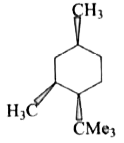 C
C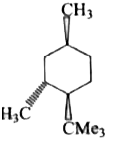 D
D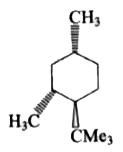
Which of the following has the lowest heat of combustion?
A B
B C
C D
D
Which one of the following has the smallest heat of combustion ?
A B
B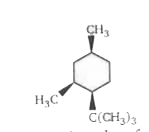 C
C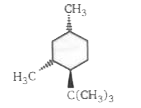 D
D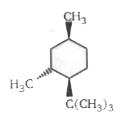
Stabilities of alkanes can be compared by converting these compounds to a common product and comparing the amount of the heat given off. One possibility would be to measure the heat of combustion from converting alkenes to CO2 and H2O . The heats of combustion are of large values and measuring small difference in these large numbers is difficult. Alkene of the lowest heat of combustion among isomeric alkenes is of the lowest energy and is most stable.
Th stability of alkenes is often compared by meansuring the ehat of hydrogenation 9 heat given off, ΔH∘h during catalytic hydrogenation. The heat of hydrogenation is in smal number, which provides more accurate energy difference.
For a compound containing more than one double bond, Δ∘h is the sum of heat of hydrogenation of individual double bonds. For non − conjugated diens, this additive relatioship is found to hold. For conjugated dienes, however, the measured value is slightly lower than expected. Cumulated dienes, which are even less stable than non − conjugated dienes.
The more stable is the alkene, lower is the heat of combustion and heat of hydrogenation. More highly substituted double bonds are usually more stable. In case of cyclokanes, compounds having higher angle strin are less stable.
In which of the following is ΔH_(h)∘ the maximum ?
View SolutionStabilities of alkanes can be compared by converting these compounds to a common product and comparing the amount of the heat given off. One possiblitiy would be to measure the heat of combustion from converting alkenes to xo2 and H2O . The heats of combustion are of large values and measuring small difference in these large numbers is difficult. Alkene of the lowest heat of combustion among isomeric alkenes is of the lowest energy and is most stable.
Th stability of alkenes is often compared by meansuring the ehat of hydrogenation 9 heat given off, ΔH∘h during catalytic hydrogenation. The heat of hydrogenation is in smal number, which provides more accurate energy difference.
For a compound containing more than one double bond, Δ∘h is the sum of heat of hydrogenation of individual double bonds. For non − conjugated diens, this additive relatioship is found to hold. For conjugated dienes, however, the measured value is slightly lower than expected. Cumulated dienes, which are even less stable than non − conjugated dienes.
The more stable is the alkene, lower is the heat of combustion and heat of hydrogenation. More highly substituted double bonds are usually more stable. In case of cyclokanes, compounds having higher angle strin are less stable.
Arrange the following compounds according to their increasing heat of combustion. I. 1−Butene
II. cis −2−Butene
III. trans −2−Butene
IV. 2− Methyl propene
View SolutionThe gas with the highest heat of combustion is :
View SolutionWrite shot notes on the Heat of combustion.
View SolutionThe standard heat of combustion of a solid boron is equal to:
View Solution
